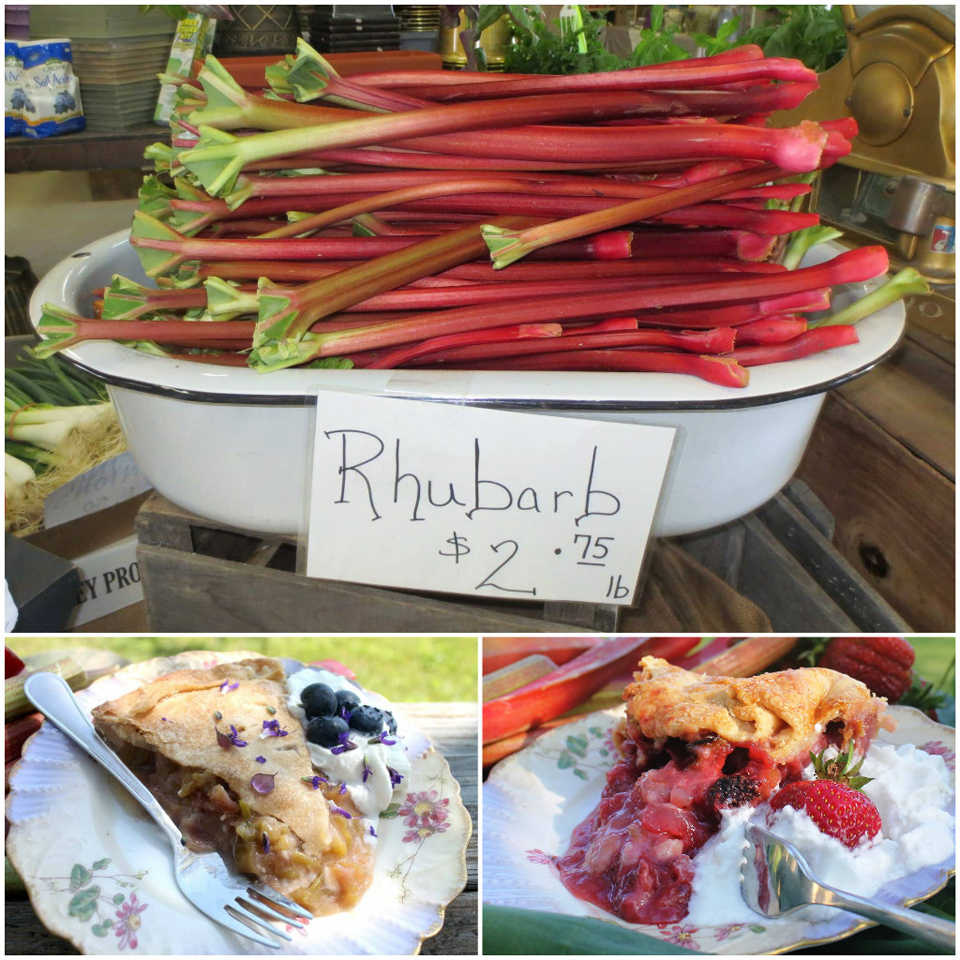Rhubarb was plentiful in Towanda, Pa., where I enjoyed a way-too-short visit with brother Jim Conforti and wife, Donna. Good neighbors Lee and Bonnie were growing lush rhubarb plants with leaves as big as elephant ears, as were Ken and Nancy, whose well-tended gardens were as beautiful as they were peacefully creative (think Monet).
Although the prime season for field rhubarb is April through June, hothouse rhubarb can be located year round. Local markets in Towanda had a good supply of rhubarb, strawberries, too, begging to be turned into pies, cobblers and crumbles. But, depending on where you live, rhubarb is not always available. Fortunately, frozen rhubarb can be found in most supermarkets, and the pie recipes offered here may be prepared with either variety.
If you are wondering whether or not thick, celery-like rhubarb stalks need peeling before use, the Washington Rhubarb Growers Association says, “No.” Discarding the skin, also rids rhubarb of much of its vitamins and color, so leave the skin on. For freezing purposes, washed and trimmed stalks may be frozen in ½-inch pieces and stored in freezer bags or airtight storage containers for up to a year, but know that rhubarb leaves are toxic and not edible.
Rhubarb is actually a vegetable, but in the kitchen, it’s a fruit. Beyond pie and cobblers, use it to make desserts and sauces, conserves and marmalades and more. For additional recipes and information, visit http://www.rhubarbpiecapital.com.
Sue Ade is a syndicated food writer with broad experience and interest in the culinary arts. She has worked and resided in the Lowcountry of South Carolina since 1985 and may be reached at kitchenade@yahoo.com.

